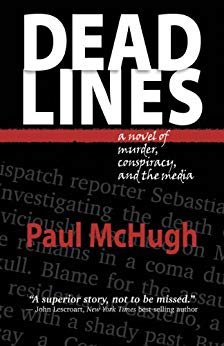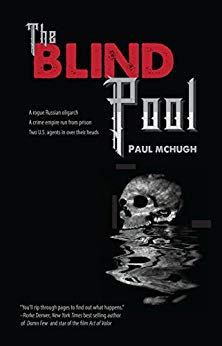California North Coast Series
By Paul McHugh, Outdoors Writer
October 10
Words are slippery. Yep, they truthfully inform, but can also be deployed to deceive. Amid the course of human events, warring parties often do battle via dueling narratives long before they get around to exchanging blows.

The ocean side of Bodega Head, southern anchor of the 17 mile-long Sonoma Coast State park. Photo courtesy of California State Parks.
I’ll provide an example. In my site posting before this one, I suggested Bodega Bay might be so labeled since the place was used as an exchange site for trade goods by both the Russians and the Spanish. Such a place-name origin seems reasonable and even likely, since “bodega” was a word for a warehouse or other type of storage facility. You might buy that, if you did not know that a Spanish explorer, Captain Juan Francisco de Bodega y Cuadra discovered this bay and sailed into it in 1775, whereupon he proceeded to visit and trade with the local Seglogue tribelet of the Coast Miwok. So, it’s most likely the place was named after that adventurous skipper.
Hey, Got Your “Steam” Right Here, Pal
Another instance of the slippery nature of words is found in a claim by PG&E (Pacific Gas & Electric Company, the biggest utility in Northern California) made early in the 1960s, that they planned to build a benign-sounding “steam-electric” plant out at Bodega Bay on the headlands. But they left one big detail out of their pitch: that steam would be generated, not by some “ginormous” copper tea kettle, but by a nuclear reactor.
How that fact came to light, who shone a light on it, and the battle waged once truth was revealed, all constitutes one of the most seminal and inspirational tales of North Coast environmentalism.
I’ll initiate the telling of that tale with my launch off the beach at Doran Park on the crisp October morn after our arrival. I paddled around a jetty to the entrance of the bay proper. On the entry channel’s left side, I made landfall on a narrow beach where a band of silver water trickled over darkened sand.

The Hole-in-the-Head pond; once a site for a nuclear reactor, now a bird refuge. Photo by Michael Maloney, S.F. Chronicle.
This is a creek that runs down from a spring that fills a pond called Hole-in-the-Head, then courses over its brim to run into the bay. It’s a spring that made the area highly attractive to the Miwoks and the European sailors. A reason it bubbles up here is because the headland’s bedrock is deeply fractured, due to a location nearly atop the famed San Andreas earthquake fault.
You should also know that the Hole-in-the-Head pond is the precise spot where PG&E wished to plop a foundation for its nuclear reactor.
An Eco-Knight Emeritus

Environmental crusaders Bill and Lucy Kortum arrive at Bodega Head.. Photo by Michael Maloney, S.F. Chronicle.
After I made landfall and hauled up my boat to a safe mooring, I watched a new Prius hybrid car drive up. From it emerged a tall man with white hair, Bill Kortum, and a shorter, silver-haired woman, his wife Lucy, ages 78 and 77, respectively. Kortum, a veterinarian from Cotati, transformed himself into a coastal crusader, passionately devoted for many years to defeating the nuclear plant proposal.
Why? Let’s turn back the clock to his boyhood.
Raised in Paradise
“My family went back for generations in this area,” Kortum told me. “I grew up near Petaluma and Cotati when there was only a few thousand people living there. My dad was a poultry expert with a 22-acre breeding ranch. We could hike cross-country, fling lines into potholes in the streams and catch a fish in every one. We wandered all over with a huge sense of freedom. We’d go to the coast and take abalone out of almost every cove without having to wade in any deeper than our waists.
“I never thought the bounty of that California might vanish in my lifetime, but I’ve seen the powers-that-be work hard to rub it out. When I was a kid, the state wanted to put a highway right through our ranch and even knock down our house. I watched my father and older brother battle that project. It gave me a good sense of how to fight.”
After he graduated with the second class in veterinary medicine ever to go through U.C. Davis, Kortum became a large-animal vet, working on ranches throughout the region. He happened to see an article in the local paper that revealed the source of heat behind the “steam” planned for the Bodega Head plant, and his hackles shot up. He already knew a dairy farm in England downwind of a British nuclear plant had to cease production due to airborne contamination. Not only that, but PG&E’s prototype reactor up at Humboldt Bay was also steadily emitting radioactive isotopes – and the one planned for Bodega would be 15 times larger. Ruination of the “green and pleasant land” of Sonoma County seemed imminent.
Kortum published a letter detailing his health objections about the project in the San Francisco Chronicle, and the battle was joined.
An Eco Coalition is Born
One thing Kortum emphasized to me was that the struggle wasn’t his alone. “It was us. The fight was won with the help of many people. Bodega Head was a defining moment in the environmental movement,” Kortum said. “People saw they could speak up, take on major institutions and win.”
The eco-crusaders included: Kortum and his brother Karl; Rose Gaffney, a feisty, elderly rancher whose holdings included 482 acres on the Bodega Head; Dave Pesonen, a young veteran of Berkeley’s Free Speech Movement; plus their secret weapon, Hazel Mitchell, a smart-as-a-whip Texan ex-pat who happened to be a waitress at a Bodega waterfront restaurant called The Tides – a place where PG&E executives and engineers from the plant site often took lunch.
A nuclear facility had been on the drawing boards of Pacific Gas and Electric Co.’s engineering consultant Bechtel as early as 1955. When PG&E chose Bodega as its prime site for the “steam electric” project, Sonoma County’s political powers fully endorsed it, predicting a bonanza.
The Waitress Who Knew Too Much
“Yep. They said our streets would be paved with gold. Didn’t mention they’d also be radioactive,” Mitchell recalled when I visited her at home during a research trip. By then, she’d moved away from Bodega to live in a duplex in Santa Rosa. But she fondly recalled her five years of work at The Tides diner, 1958-1963. She’d struck up chats with Alfred Hitchcock and his movie crew when he came to Bodega to shoot, “The Birds,” in 1961. But she really remembered overhearing PG&E execs, drinking, dining, and boasting about their new power plant.
“I hit the ceiling, but I kept it to myself,” Mitchell told me. “I wasn’t about to see a place I loved get destroyed. You can’t take a beautiful, natural wonder like Bodega Head and turn it all industrial,” Mitchell told me. “Something like that just has to be a park.”
Mitchell took her hand-written petition of opposition to the local Fishermen’s Grange crabfeed and promptly acquired 300 signatures – a good start toward her eventual grand total of 1,300.
Her next move was creating a new Bodega chamber of commerce as a counterweight to all the other businessmen who had endorsed PG&E’s project.
Don’t Get a Cowgirl Mad
Meanwhile, Gaffney became infuriated when it seemed as if her headlands acreage could be condemned by eminent domain and transferred to the utility. Gaffney had originally made her way to Bodega by jumping freight cars, and lived in an old shack out on the headlands. She was famed for either chasing trespassers off her land with a baseball bat, or brandishing a .22-caliber rifle. She often demanded a dollar for the privilege of walking across the headlands to the sea. Consequently, she wouldn’t take an affront like PG&E’s lying down. She sued, then mounted a letter-writing campaign. She vowed, “I’ll fight them if it takes every cent I have in this world.”
Over in Cotati, Kortum, working his large-animal practice with the aid of two partners, continued to research the side-effects of nuclear power. He found that the facility in England had poisoned pastures and livestock by liberally sprinkling them with iodine-131, and something similar had happened on the pastures of Humboldt. Nearly all his agricultural clients were downwind of prevailing westerlies from Bodega, so he rallied Sonoma farmers to combat this new threat to their way of life.
We’ll Put Our Reactor on Ball Bearings
Pesonen, a forestry student and youthful member of the Sierra Club, overcame the reluctance of the old guard and coaxed the club into the fight. He and Doris Sloan, a Berkeley professor of environmental science, steadily brought criticism to bear until they finally turned up a bit of important fact that could deliver the coup de grace: the proximity of the San Andreas Fault. It ran straight down the entrance to Bodega Bay.
“PG&E just tried to laugh it off,” Kortum told me. “Their consultants said, ‘Oh, we can deal with that by just installing our reactor on roller bearings.’ ”
The state Public Utilities Commission didn’t like that joke. Didn’t even crack a smile.
Though the utility had sunk $3.9 million into a hole in the ground, en route to building a $60 million plant they hoped to have running by 1965, PG&E ended up selling all its Bodega holdings to the state Department of Parks and Recreation for a token $1.
Best “Birding” Spot in Sonoma County

Great Blue Heron resting between hunting ventures at Bodega Bay. Photo by D. A. Levy.
Forty years in the past, the “Hole in the Head” was a concrete cylinder 90 feet across and 120 feet deep where PG&E planned the base of its containment vessel. Today, it’s a deep pond, lush with cattails and willows. It’s one of Sonoma County’s hottest birding spots.
Kortum went on to help found COAAST (Californians Organized to Acquire Access to State Tidelands), which developed Proposition 20 in 1972 — the Coastal Protection Act. Prop. 20 is now praised as the first major grassroots citizens’ initiative focused on the environment in the United States.
Within a decade, its provisions spawned an impressive legacy: the state Coastal Commission, which regulates shoreline development; the Coastal Conservancy, which funds environmental projects; the 1,200-mile California Coastal Trail, planned to run from Oregon to Mexico, now 60 percent complete; and provisions for public access including paths through Sea Ranch and a now-open gate at David Geffen’s Malibu estate.
It’s All About The Land

Hikers on a trail at Bodega Head. Photo courtesy of California State Parks.
“It’s all about the landscape,” Kortum told me, out on the boardwalk leading to the Hole pond. “As a large animal vet, I was out on the land every day. I saw we have to fight for the landscape we want to keep. When we worked on the Coastal Initiative, a slogan we used was that each Californian owns only 2 inches of shore. It’s much less now, of course. So it all should be shared.”
That might’ve been the end of the nuke, but it wasn’t the end of the story.
“During the PG&E battle, I found out politics can be fun,” Mitchell said. She worked with a new group, the Sonoma County Taxpayers Association, to recall two county supervisors who had favored the nuclear plant. Hazen met local contractor Wes Mitchell in 1961, married him in 1963, and went on to become a real estate broker. The pair wound up favoring planned development in the area much more than Kortum did. After he was elected a county supervisor, they helped to recall him into the bargain. However, today, all parties speak amicably of each other.
Bill Kortum still lives on a Petaluma ranch, and runs five cows — to keep his hand in.
“To keep your moxie alive, work at it,” Kortum growls. “Democracy isn’t exercised enough, in my opinion. If you think you’re right, don’t be scared to stick your neck out.”
Who’ll Be The New Crusaders?
Mitchell, 87, moved with her husband Wes to that duplex in Santa Rosa. She’s confined to a wheelchair. A car wreck broke her back in 1982. Recently, she experienced a series of strokes. But she swears she’ll live to 90, if not 100.
“My doctor says I could, because I’m about that stubborn,” says Mitchell.
Mitchell’s advice sounds like Kortum’s. “If you’re interested an issue at all, just go ahead and get yourself involved. But don’t trust bureaucrats as far as you can throw ‘em.”
(NB: Bill Kortum passed away in 2014, nine years after I met him at Bodega Head; Hazel Mitchell died in 2008 – she did in fact make it to age 90. Their legacy endures.)








